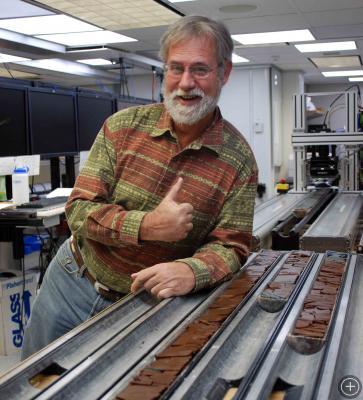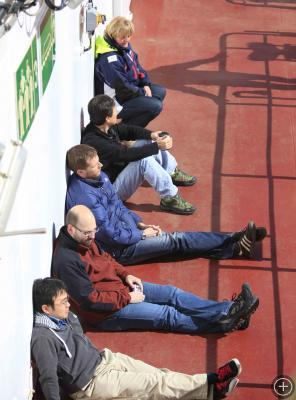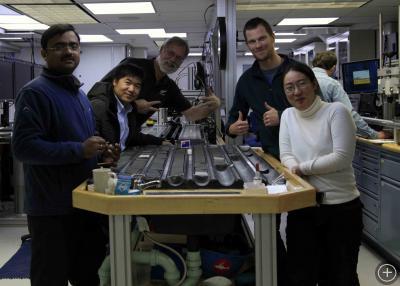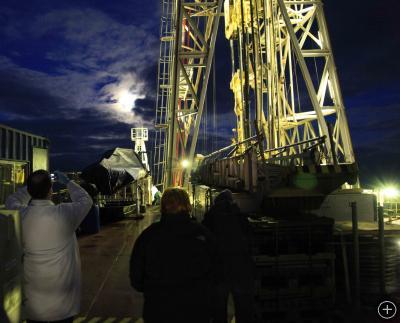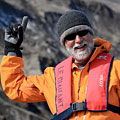Tales of Past Warm Climates
Temperature 0°C, wind 35 kts, 5 meter swells
At Site U1356, Hole U1356A,
Position: 63º 18.6139’S, 135º 59.9397’E
Water Depth: 4003 meters
Core Depth (penetration into the seabed): 1004 meters
Total weight of over 3 miles of pipe hanging from the ship: >650,000 pounds!
ABOARD THE JOIDES RESOLUTION, OFF THE COAST OF WILKES LAND, ANTARCTICA– Wow! What a week! We just finished retrieving our final core from the bottom of a drill hole more than 1 km in length. We’ve now recovered and described sediments that range in age from a few million to more than 36 million years old, all in the span of about 9 days.
The first sediments that came up told us what Antarctica was like when the ice sheet was like it is today. Then we saw evidence of a much warmer time and then a colder time before that – a time when flotillas of icebergs carried rocks and debris from the Antarctic continent out over our drill site, dropping this debris as they slowly melted. Even further back in time, more than 30 million years ago, we began to find evidence of much warmer waters…and for the first time no evidence of large ice sheets.
We also began to see sediments that may have come from Tasmania or other parts of Australia. Even though we are now thousands of kilometers away from Australia, back in time, 30 million years ago, Tasmania and Antarctica were much closer, perhaps only 100’s of kilometers apart. Plate tectonics since that time has carried Australia to the north while Antarctica has remained more or less anchored at the South Pole. So, not only do our sediment cores tell us tales of past warm climates (and perhaps give us hints as to what lies ahead in our greenhouse future), they also tell us new things about the science of plate tectonics.
The weather here changes fast! Yesterday, we had a warm (well…..maybe 4°C) and sunny day – our first sunshine in over 3 weeks. After shift, EVERYONE went outside to feel the warmth of the sun and to see blue skies and blue water.
I was up for shift at midnight. It was calm and cloudy with snow at 4AM but by 9 AM it was blowing 35 kts and we now have waves over 20 feet high. The change in weather happened while we were retrieving our very last core.
Now we will spend another 2 days here doing something called “logging”. Logging the hole is when we send instruments down to the very bottom of the drill hole after we remove the metal pipe that now supports it. These instruments measure the properties of the rocks we drilled through. By doing so we can piece together the sections of sediment we actually saw and described, even across breaks in our core that may have been caused by problems with the drilling. Altogether, we usually recover about 50% of the rocks we drill through. Some of the softer or stony units just can’t be cored and recovered very easily so this kind of work, logging, is very important for us.
So, back to writing up our results and making a short video clip for you about the work in the lab – I’ll send that off tomorrow. It’s great fun out here and the time is going by very quickly, just about as fast as the short Antarctic summer…..

 No comments
No comments 